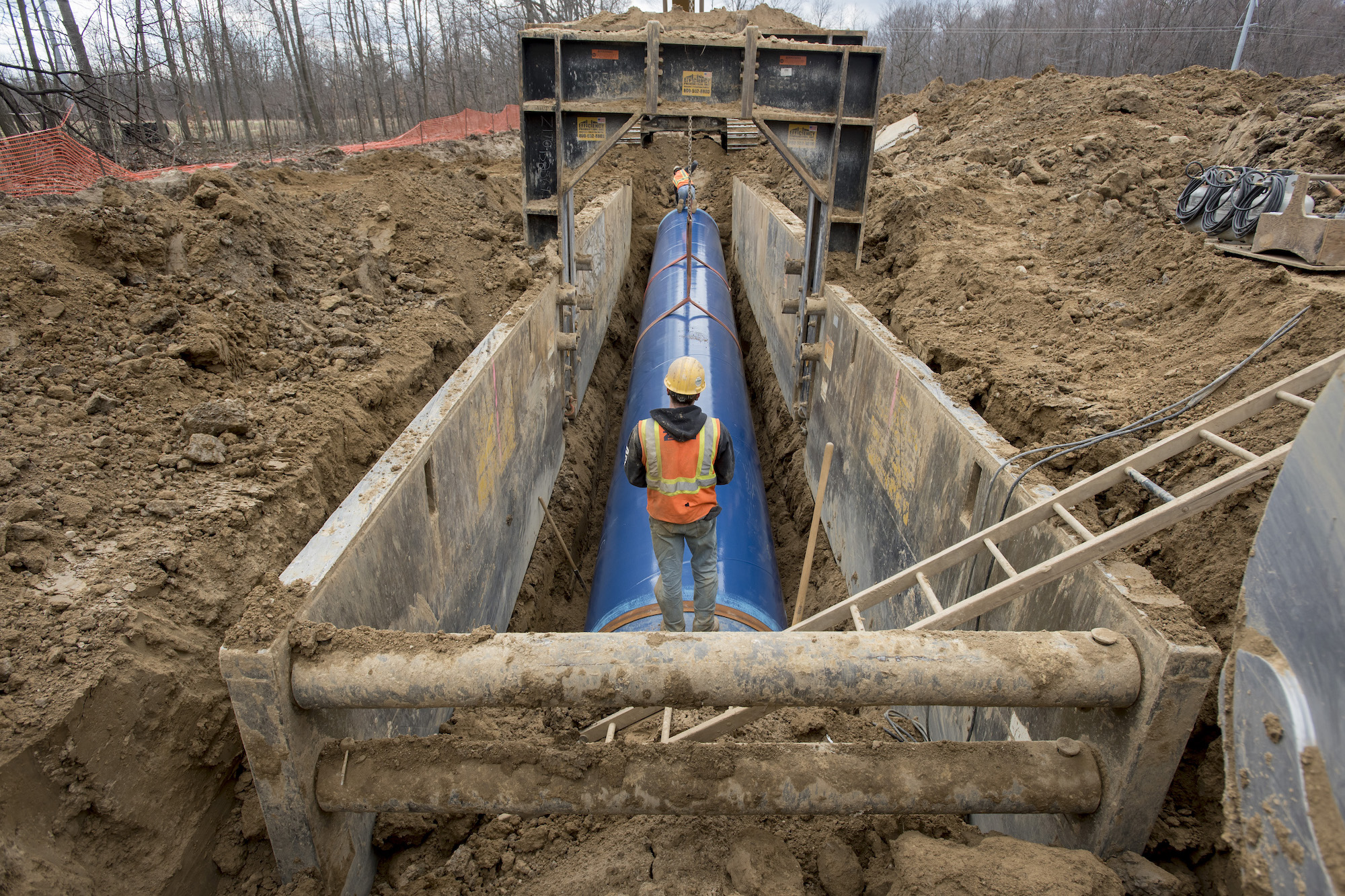Infrastructure in
America
Liquid Utility
Liquid Utility is a collaboration between e-flux Architecture and the Temple Hoyne Buell Center for the Study of American Architecture at Columbia University. It forms part of the Buell Center project Power: Infrastructure in America, and features contributions by Nikhil Anand, Andrea Ballestero, Maia Brown, Daniel Fernández Pascual & Alon Schwabe, Catherine Coleman Flowers, Adriana Garriga-Lopez, Shea Howell, Andrea Muehlebach, Marcela Olivera, Elizabeth A. Povinelli, Malini Ranganathan, and Jacinta Ruru.
_____
The maxim that “water is life” has never had more serious implications—reaching back into history, down into spongy aquifers, and up into kitchen sinks. Three in ten people worldwide lack access to safe drinking water, and six in ten lack access to adequate sanitation facilities.1 Those who manage this liquid utility’s provisioning infrastructures across time and space thus should not escape scrutiny.
Today’s strained water systems are one of the public goods that have been most resistant to total capture by private capital. But this capture—coming largely in the form of convoluted financial maneuvering and hybrid management schemes—is nevertheless well underway. In urban areas especially, infrastructural services blur the nominally sovereign borders between public works and corporate monopoly. From brutal shutoffs in Detroit and São Paulo to dramatic shortages in Mumbai and Cape Town, to corroding pipes in Flint, Pittsburgh, and across Appalachia, the devastating effects of this form of governance are increasingly felt. However, the scholarship, art, architecture, and activism that have shaped public knowledge around it have yet to effectively intertwine at the regional, much less international, levels. If there is a right to water, who holds the rights to the pipes?
Private plans for municipal and regional water management have structured land grabs and political lobbying across the planet—and they may become part of any international “Green New Deals” in the years to come. Transnational corporations such as Veolia, Suez, and Nestlé have been heavily investing in water systems of all types, with local resistance following closely behind.2 This opposition can be seen in Baltimore, which was recently the first major city to ban water privatization.3 And “remunicipalization” is a trend that seems to have traction beyond water around the world.4 The magnitude of these interconnected transformations, which in both cause and effect are associated with climate change, cannot be overstated.
The repercussions of intensified degrees of warming, as reported by climate scientists, NGOs, research institutes, and intergovernmental coalitions have translated into visions of a near future that is largely uninhabitable, especially for already vulnerable groups. One 2017 study reveals that by 2050, with a temperature rise of two degrees Celsius above pre-industrial levels, a quarter of the earth will have to contend with serious drought and desertification—with desertification alone displacing at least 135 million people—alongside other economic and agricultural impacts, all of which are unevenly spread across lines defining gender, race, ability, and class.5 These varied infrastructural configurations infuse and reinforce the existing systems of power flowing through pipes, plants, and switches. And yet, in its important focus on degrowth, care, maintenance, and corruption, cultural resistance to these trends has tended to underplay the often anti-democratic methods that are used by the changing climate’s profiteers, leaving questions regarding governance, equity, and power largely unaddressed. In the meantime, how liquid can this most public of utilities become before it’s all dried up?
In March of 2018, Buell Center staff traveled to Detroit for a series of workshops co-convened with the University of Michigan titled “Legacies of Emergency Management.” Joining the workshops was Lila Cabbil, a founding member of the People’s Water Board, President Emeritus of the Rosa and Raymond Parks Institute, and a life-long water warrior. Amongst her many contributions to the conversation, Lila called upon all present to recognize the fact that everyone is implicated in the worldwide struggle for clean water, and that “knowing” and “doing” something about it, though aligned, were not the same. We were saddened to learn that Lila passed away in February, and we dedicate this series to her memory.
- 1United Nations, "Clean Water and Sanitation," Sustainable Development Goals, https://www.un.org/sustainabledevelopment/water-and-sanitation/.
- 2See Julia Lurie, "This Major City’s Drinking Water Was Fine. Then Came the Private Water Company," Mother Jones (October 26, 2016), https://www.motherjones.com/environment/2016/10/private-water-pittsburgh-veolia/; Russ Zimmer and Andrew Ford, "Drinking water: 1.5M in NJ served by utilities that failed tests since Flint," Asbury Park Press (November 20, 2018), https://www.app.com/story/news/health/2018/11/20/nj-tap-drinking-water-supply-quality-safe/1931148002/; C. Heidi Grether, "Nestlé Waters North America, Inc. Application for Permit to Increase the Water Withdrawal from Production Well 101," Michigan Department of Environmental Quality Interoffice Communication (April 2, 2018), https://www.michigan.gov/documents/deq/deq-dwmad-eh-swpu-FinalMemo_619293_7.pdf.
- 3Bernard C. "Jack" Young, "A 'more just water system' in Baltimore," Baltimore Sun (December 17, 2018), https://www.baltimoresun.com/news/opinion/oped/bs-ed-op-1218-water-accountability-20181217-story.html.
- 4See Corporate Europe Observatory and Transnational Institute, Water Remunicipalisation Tracker, http://remunicipalisation.org/front/page/home; Reclaiming Public Services, eds. Satoko Kishimoto and Olivier Petitjean (Amsterdam and Paris: Transnational Institute, 2017), https://www.tni.org/files/publication-downloads/reclaiming_public_services.pdf.
- 5Bill McKibben, "How Extreme Weather Is Shrinking the Planet," New Yorker (November 26, 2018), https://www.newyorker.com/magazine/2018/11/26/how-extreme-weather-is-shrinking-the-planet.

Workers on a section of the Karegnondi Water Authority pipeline in Michigan (David Guralnick, The Detroit News)